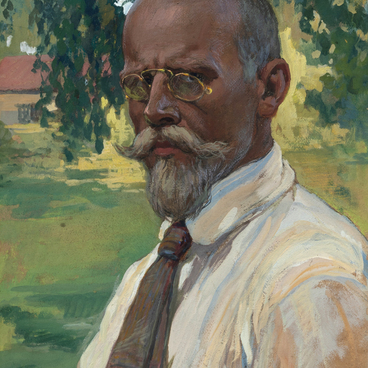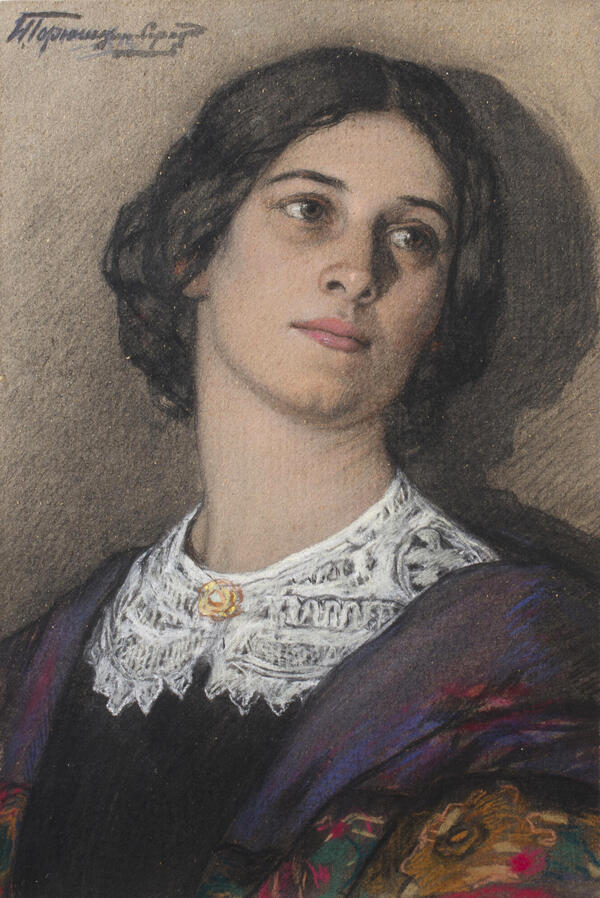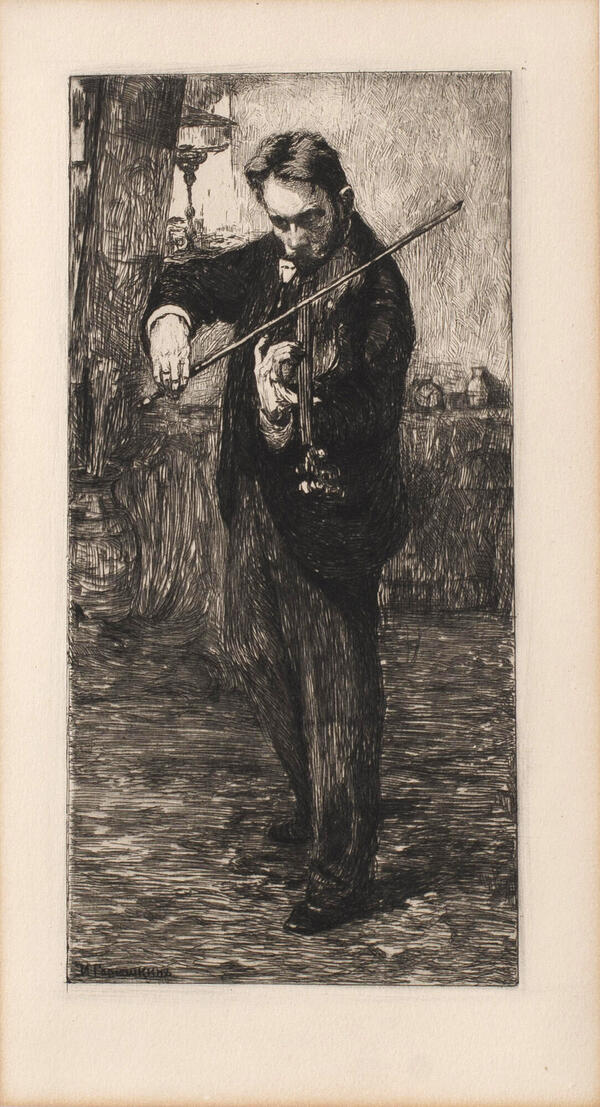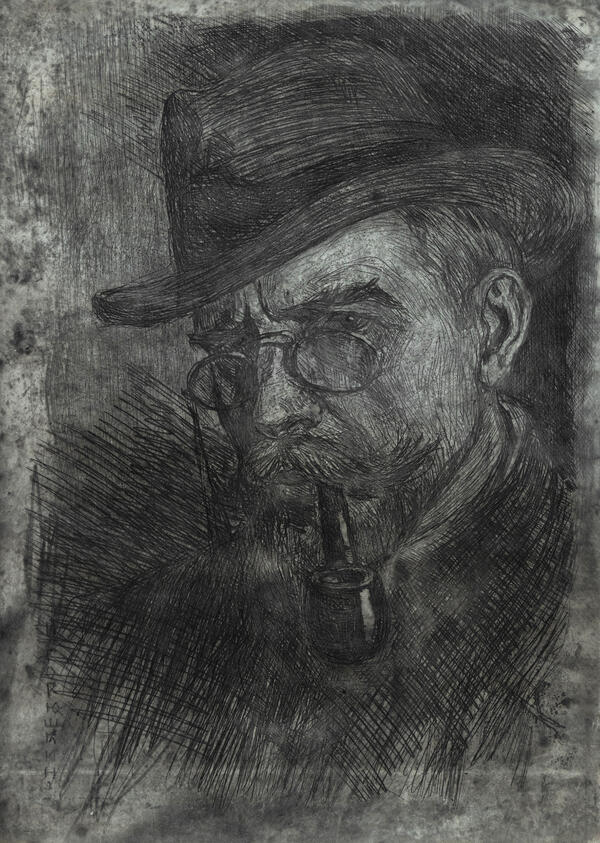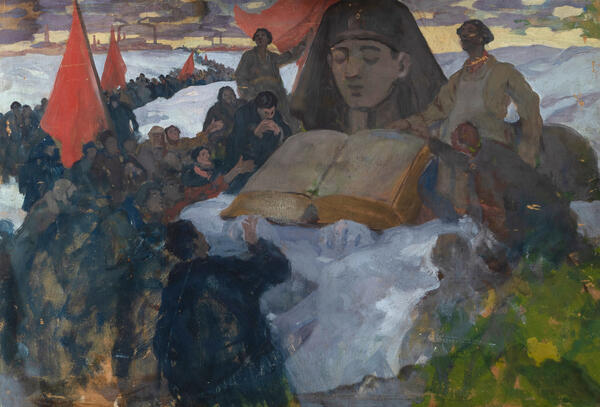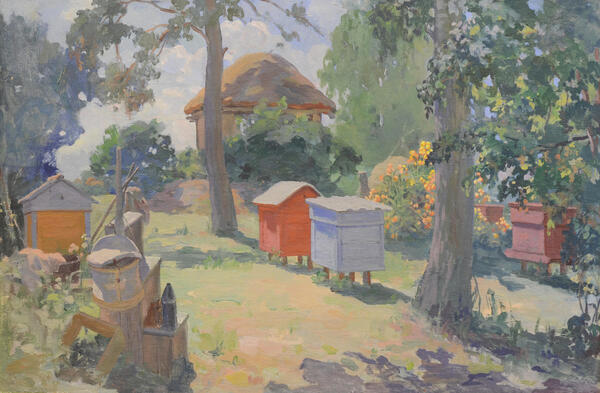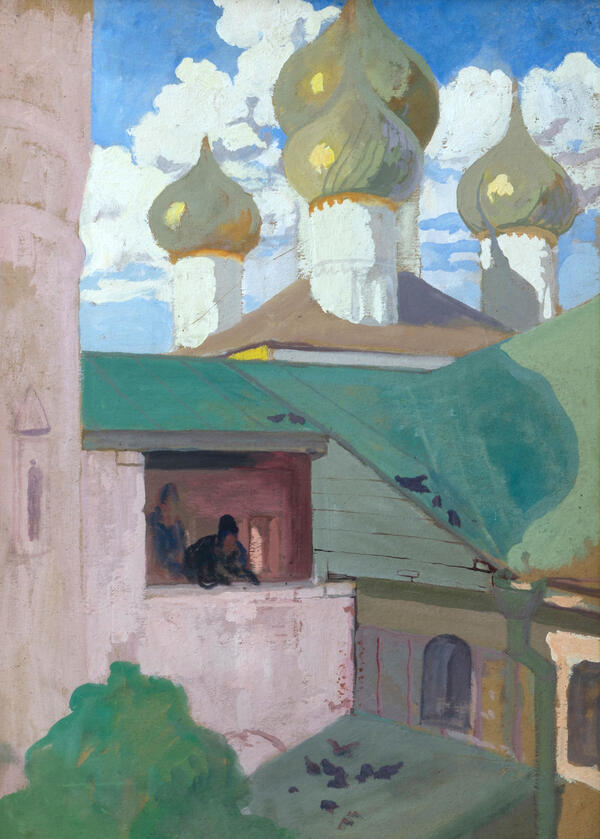The oeuvre of Ivan Silych Goryushkin-Sorokopudov is distinguished by a remarkable series of portraits that he created en plein air. These works reveal the artist’s profound understanding and insightful depiction of his models. The artist completed the painting “Portrait of Princess Mansyreva” in 1915.
Ivan Goryushkin-Sorokopudov strove to capture the young woman’s charm amid bright summer scenery. This portrait was created using a mixed technique. The artist used pastels and tempera to better capture the color, light, and airiness. The beauty of the portrait lies in its openness and simplicity. In this painting, the artist avoided both the excesses of salon painting and the asceticism of the Wanderer style which was popular between 1871 and 1923.
The subject of this portrait is Nadezhda Vladimirovna Mansyreva (1894–1976). At the time the portrait was painted, she was 21. Nadezhda Mansyreva was the daughter of Vladimir Nikolayevich Mansyrev, a Councilor of State and recipient of the Order of St. Anna, 3rd class, and the Order of St. Stanislaus, 2nd class.
Vladimir Mansyrev served in the Penza Board of Control and was also the commandant of the second district of the Penza Uyezd. In 1908, he was elected to a position in the regional zemstvo government. That same year, Ivan Goryushkin-Sorokopudov moved to Penza from St. Petersburg. The mother of Nadezhda Mansyreva — Mariya Fyodorovna Mansyreva, née Bervi — was one of the co-directors of a private girls’ gymnasium in Penza.
In 1967, the Soviet Artist publishing house released a postcard featuring a reproduction of the portrait of Princess Nadezhda Vladimirovna Mansyreva. The noble title “princess” was removed from the title, and the year 1912 was indicated in the description.
Among the plein-air portraits of Ivan Goryushkin-Sorokopudov, there are hardly any images of men. He usually painted their portraits in interior settings. One such work is the “Male Portrait” from the 1910s. The artist painted it in his studio against a backdrop of a cabinet designed according to his own sketches.

